Tuscany is characterized by a harmonious mixture of landscapes at times unthinkable, that are impossible to describe but need simply to be seen.
Nature and landscape make their presence felt through mountain ranges, where oak, beech and white fir woods surround meadows in high mountains, winding hills adorned with rows of vines, olives and towering cypresses and dazzling beaches with crystal clear water.
Established in 1993 and situated on the Tuscan-Romagnolo Apennine covering a vast area straddling Romagna and Tuscany.
The Park includes some of the largest and best kept woods and forests in Italy, is host to a myriad of flowers and plants and to fauna of great interest that include the wolf and the golden eagle among the predators and different species of hoofed animals (ungulates).
The forests and the countless other natural environments are set off with evidence of the presence of man for thousands of years: villages and towns, bridle paths and more than anything, two magnetic centres of attraction for the spirit, the Verna Sanctuary and the Hermitage of Camaldoli.
http://www.parks.it/parco.nazionale.for.casentinesi/
http://www.appenninoeverde.it/natura/parchi-naturali/foreste-casentinesi.html
Pratovecchio – 119 km (1 h 44 min)
A nature reserve, situated in Garfagnana, in the province of Lucca, at the north-western tip of Tuscany.
The Orecchiella Natural started life in 1960 in actual fact at the time without a proper law. The establishment of three nature reserves, Pania di Corfino (founded in 1971), Lama Rossa (created in 1977) and Orecchiella (established in 1980), has contributed to the protection of the local environment. Today the Park, as a result of the union of the three reserves mentioned before, together with the Forest in the upper Serchio valley, respectively run by the National Forestry Commission (Corpo Forestale dello Stato) and by the Garfagnana Mountain Community. The Park, in turn, is part of the National Park of the Tuscan-Emilian Apennine.
From the flora point of view you will find large forests of beech, chestnut and fir trees. the fauna consists of wild animals like the Apennine wolf, wild boar, deer and mouflon. It is also home to birds of prey like the falcon and the golden eagle.
The Visitors’ Centre of the National Forestry Commission is an essential reference point for the Park which, as well as the welcome centre, houses the Naturalist Museum and the Birds of Prey Museum.
Also located in the Park is the Mountain Garden with flowers and plants typical of environments at high altitude. In particular, types of plants, both annual and perennial, herbs, bushes and trees characteristic to the Apennines.
http://www.parcoappennino.it/pagina.php?id=148
http://www.ingarfagnana.it/Itinerari/Parco_Orecchiella/Orecchiella.htm
Centro Visitatori – 77 km (1 h 30 min)
This is a state-run natural reserve established in 1971 and lies in the borough of Bagni of Lucca, in the upper reaches of the Fegana valley.
Orrido di Botri is a spectacular, stark and impressive limestone gorge, with steep walls dug out by the cold waters of the Rio Pelago torrent. The canyon is set in the craggy Apennine landscape with beech groves, dominated by the summits of Monte Rondinaio and Tre Potenze that reach a height 2000 metres.
In the summer period, when the water level is lower and the temperatures are milder, you can climb to the upper limit of the gorge.
The vegetation in the gorge is distributed according to the stratification, at the cold and damp lower levels you will find mainly moss and ferns, giving way slowly on the upper reaches in a milder climate to plants like aquilegia (Granny’s Bonnet or Columbine) and silene (catchfly or Campion) enclosed by beech woods.
The rugged walls of the Orrido at some points reach the height of 200 metres, and have always been an ideal nesting site for the golden eagle.
Lying in the lower part of Valdinievole, between the towns of Altopascio and Chiesina Uzzanese, the Sibolla Lake creates a damp, humid environment of exceptional naturalistic interest, thanks to its natural state and the spontaneous flowers. The area became protected in 1996 and is a botanic “jewel” for the variety of plants and the numerous rare species of flora to be seen, some found only in Italy and others in the whole of southern Europe.
Despite its miniscule size, it is one of the most southern peat bogs in the world: in ancient times the lake was a great deal larger, but got steadily smaller after parts of the lake were reclaimed. In actual fact the water in the lake comes from subsoil springs, not easily reclaimable.
http://www.sibolla.it/01_il_lago_sibolla.php
http://www.iltuffetto.it/sibolla/
Lago di Sibolla – 6 km (10 min)
The Regional Natural Park of the Apuan Alps was established in 1985 and spreads over parts of Garfagnana, Massa Carrara and Versilia.
The Apuan Alps distinguish themselves from the nearby Apennines for their harsh morphology, their deep valleys, and their imposing and very inclined slopes. The Apuan Alps are famous for the beauty of their marbles, their deep abysses, and the great cavities of the subsoil characterized by karst phenomena.
The geographical position of the massif, its exposure, and the different nature of the rocks determine the presence of varied and contrasting environs favoring floral and wildlife variety and activity.
The Apuan Alps represent one of the most original mountain areas in Italy, for the variety of the landscape and environments they preserve. The ancient presence of human settlements has left important historical and cultural evidences in the area.
http://www.parks.it/parco.alpi.apuane/
Centro Visitatori Castelnuovo – 59 km (1 h 06 min)
Set in the splendid setting of the Apuan Alps, the “Empty Mountain” (Corchia) carries with it́ the secrets of millions of years of geological history: inside the mountain, 70 km of tunnels and wells, 1200 metres on maximum difference in height, a system of karst conducts created in 2 square kilometres of rock make the Antro del Corchia the most important Italian karstic system and one of the largest in the world.
What makes the Corchia karstic system so particular is above all its extreme morphological and evolving complexity. We are talking about a three dimensional network of galleries and caves enclosed in a block of marble and dolomitic rock about 2 km long, 1 km wide and almost 1200 m tall.
A lit and guided route, of about a kilometre, enables visitors to adventure into the bowels of the Corchia mountain and the core of the karstic system.
The Quicksilver Mines are at Levigliani di Stazzema (Lucca) and are the oldest mineral excavations in Versilia and upper Tuscany, mentioned in acts passed by Pisa City Council in 1153.
To be singled out the presence of mercury in its pure natural state and cinnabar (vermilion, mercuric sulphide), uncommon in the world.
http://www.apuanegeopark.it/apuanegeopark_geotur_antro_corchia.html
http://www.archeominerario.it/archeominerario_miniere_argentovivo_1.html
Levigliani – 75 km (1 h 10 min)
The Wind Grotto (or Cave of the Wind) lies in one of the more desolate parts of the Apuan Alps but rich in karstic phenomena and is one the most important grottoes open to the public in Europe. Atmospherically conditions have endlessly modelled, sculpted and worn away the calcareous rock, creating natural sculptures and forms, like the massif of the Panie mountain, the enormous natural arch connecting the twin peaks of Monte Forato, the stone waterfalls and the crevasses and chasms in the plateau on the Vetricia mountain.
Nestled between these natural monuments, the Wind Grotto contains an incredible array of the effects of underground karst starting from glistening live stalactites and stalagmites, to pools and lakes, water course and streamlets, forms of erosion, mud formation of and even perfectly vertical wells which can be visited along safe paths.
Its name comes from the strong air current, owing to the presence of openings at different heights: the lower one (also the entrance for visitors) is situated at 627 metres above sea level, while the higher one, unreachable, is 800 metres above, that is at over 1400 metres above sea level. The difference between the external temperature and the temperature inside the caverns creates the wind.
http://www.grottadelvento.com/ITA/home.aspx
http://grotte.toscana.it/grotta_del_vento.html
Grotta del Vento – 60 km (1 h 13 min)
The marble of Carrara (for the Romans marmor lunensis, “marble from Luni”, so called because it was shipped from the port of Luni) is a type of marble extracted in the quarries of the Apuan Alps, in the district of Carrara, and is universally known as one of the best marbles.
The marble quarries were, probably, already in use in the Bronze Age but it was under the Romans that the quarries were developed and capitalized. During the Renaissance, the marble of Carrara was used by Michelangelo for his sculptures, he himself would personally choose the blocks from which he sculpt his masterpieces.
Today is possible to visit the marble quarries, including those still working, thanks to the different companies that organize guided tours.
http://www.turismoinlunigiana.it/fra/21/voce/4/cave-di-marmo-di-carrara.htm
http://www.aptmassacarrara.it/scopri/marmo/default.aspx
http://www.cavedimarmotours.com/it/
Carrara – 71 km (45 min)
The Park was established in 1979 and the territory it covers runs along the coastline between Viareggio and Livorno, in the provinces of Pisa and Lucca, including different boroughs.
The Park is subdivided into large areas: the Macchia Lucchese is the wooded strip to the North (between Viareggio, Torre del Lago Puccini and the coast); the area of Massaciuccoli includes the lake and the surrounding marshland; the Fattoria (farm) of Vecchiano and the Fattoria of Massaciuccoli are on the other hand large pieces of land reclaimed from the lake. The two areas differ from each other from the pumping system used for drainage. Continuing along the coast are the important estates of Migliarino, of San Rossore, of Tombolo and of Coltano, part agriculture and part woods. The last part of the area which makes up the Park are the Secche (shoals) of the Meloria, an important system of shoals, with two emerging rocks, making a sea bed of great naturalistic value.
http://www.parcosanrossore.org/
http://www.parks.it/parco.migliarino.san.rossore/
Centro Visitatori San Rossore – 39 km (45 min)
Il Lago di Massaciuccoli è un lago costiero nelle località di Massarosa e Torre del Lago Puccini (provincia di Lucca).
Con la nascita del Parco Naturale Regionale di Migliarino, San Rossore e Massaciuccoli, fu istituita anche una riserva (Riserva Naturale del Chiarone) che nel 1985 fu affidata alla Lega Italiana Protezione Uccelli, dando origine così all’Oasi LIPU Massaciuccoli.
The lake, known in the Roman era, had become famous for the hunting expeditions of the composer Giacomo Puccini: the maestro used to live in a beautiful villa on the shores of the lake (where he is buried today), in the locality that carries his name (Torre del Lago Puccini).
The lake and the surrounding district of ditches and canals were, until recently, an important stop for all migratory birds en route towards warmer countries. Most of the canals were dug artificially at different times, even during the Fascist era, to get rid of malaria from the surrounding countryside and for the mining of peat. Up until a few years ago, what is more, extracting silica sand removed hundreds of acres of natural habitat.
Some vast and very deep secondary basins are the outcome of the excavation of the silica sand for the local production of glass, now against the law a few decades ago. The peat taken out of the lake was used as fuel for the furnaces.
http://www.oasilipumassaciuccoli.org/
http://www.parcosanrossore.org/conoscere-il-parco/visitare-il-parco/lago-e-padule-di-massaciuccoli
Lago di Massaciuccoli – 42 km (47 min)


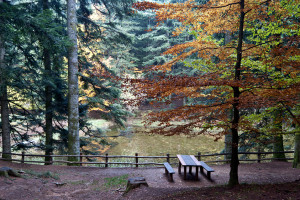
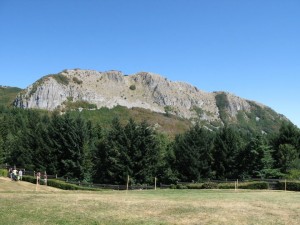
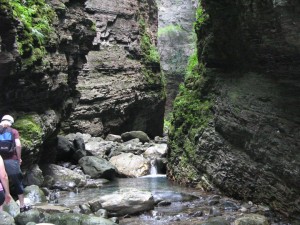
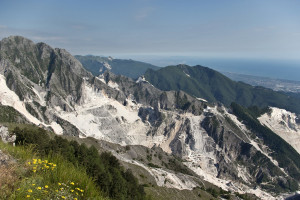
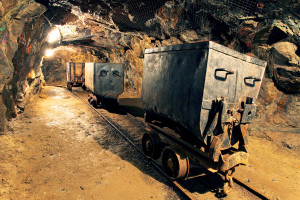
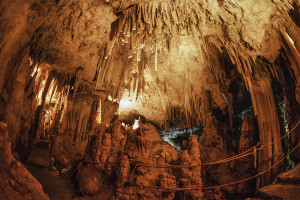
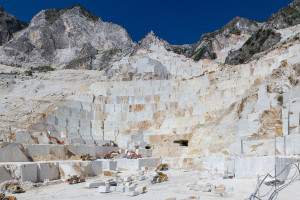
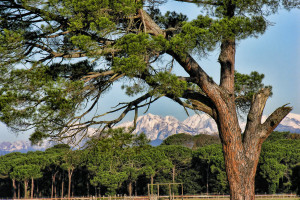
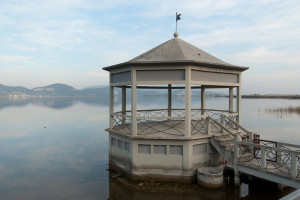
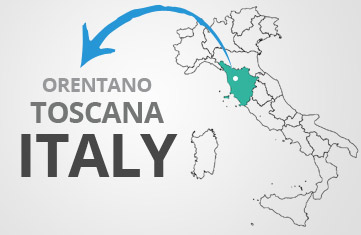 Villa Colombai
Villa Colombai